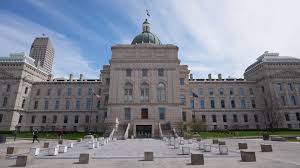Introduction
The legal landscape surrounding public demonstrations and law enforcement interactions is evolving across the United States, and Indiana is no exception. A recent legal battle over the state’s “buffer zone” law has brought attention to the delicate balance between public safety and constitutional rights. Commonly referred to as the “Indiana buffer law,” this legislation created physical boundaries between law enforcement officers and the public during active duties. However, the law has faced pushback, resulting in a temporary injunction. This article explores the background, implications, and future outlook of the Indiana buffer law injunction, shedding light on its impact for residents, law enforcement, and civil liberties.
What Is the Indiana Buffer Law?
The Indiana buffer law, officially known as House Enrolled Act 1186, was signed into law in 2023. It made it a misdemeanor for individuals to knowingly approach within 25 feet of a law enforcement officer who is actively engaged in official duties after being warned to stay back. Supporters of the law argued it was necessary to protect officers and maintain order during tense situations such as arrests, investigations, or public disturbances.
Critics, however, claimed the law was overly broad and infringed on First Amendment rights, particularly the right to film and observe police conduct in public spaces. Civil rights advocates feared it could be used to suppress lawful protest or limit public oversight of police behavior.
The Injunction and Legal Challenge
In March 2024, a federal judge issued a preliminary injunction blocking enforcement of the buffer law. The ruling came in response to a lawsuit filed by the American Civil Liberties Union (ACLU) and other civil rights organizations, who argued the law was unconstitutional. The court found that the statute likely violated the First Amendment and lacked clear guidelines, potentially leading to arbitrary enforcement.
The injunction is temporary, but it effectively halts the law’s implementation while the case proceeds through the courts. The judge emphasized the importance of public accountability and the potential chilling effect the law could have on free speech and the right to monitor government actions.
Implications for Indiana Residents
For now, Indiana residents can continue to document and observe police activity in public, as long as they do not interfere with law enforcement operations. The injunction serves as a reminder of the critical role that legal checks and balances play in safeguarding civil liberties. While public safety is a legitimate concern, laws that restrict access to public spaces or inhibit constitutional rights are subject to rigorous scrutiny.
Law enforcement agencies across Indiana have been advised to avoid enforcing the buffer law until further legal clarity is provided. Community members, activists, and journalists should remain aware of their rights and stay informed about ongoing developments related to the case.
Conclusion
The Indiana buffer law injunction highlights the ongoing tension between public safety and individual freedoms. While the law aimed to protect officers during active duties, its broad language raised serious concerns about constitutional rights. As the case unfolds, it will serve as an important legal benchmark in the national conversation about civil liberties, police accountability, and public engagement. Indiana residents should continue to pay attention to this case, as its outcome could have lasting effects on how laws are written and enforced in the future.



